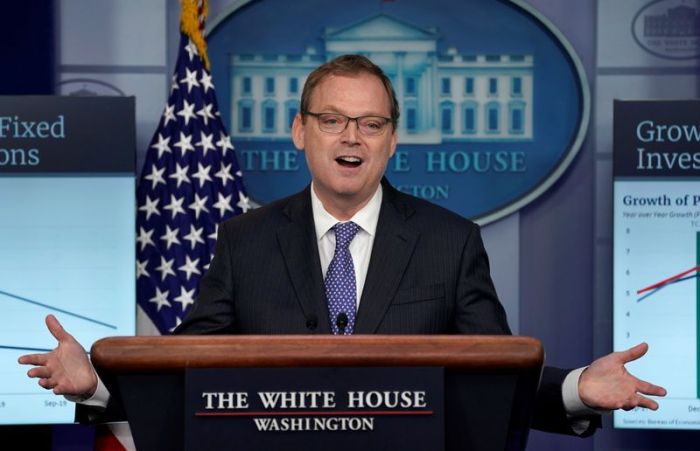NEW YORK (Reuters) – The U.S. dollar rose to a two-week high against a basket of currencies on Tuesday as investors fled riskier assets amid a slump in oil prices that sapped demand
The U.S. Dollar Currency Index <=USD>, which measures the greenback’s strength against six other major currencies, was 0.24% higher at 100.19. The index hit a two-week high of 100.48 earlier in the session.
U.S. crude oil futures moved into negative territory for the first time on Monday, as a sharp fall in global fuel use due to the coronavirus pandemic creates a supply glut and a shortage of storage capacity. [O/R]
Factory closures and travel curbs enforced to slow the pace of new coronavirus infections have triggered a collapse in oil prices. This is drawing money from commodity currencies and other risk assets to the safety of dollar-denominated assets.
“It’s definitely a risk-off day so the dollar is benefiting from that now,” said Minh Trang, senior FX trader at Silicon Valley Bank in Santa Clara, California.
Oil-linked currencies like the Norwegian crown and the Canadian dollar were Tuesday’s worst-performing currencies, along with the Swedish crown, which is very sensitive to global economic stability.
“Yesterday’s oil rout spooked investors, and while some economies are starting to reopen from lockdowns, the road back to normalcy is clearly going to be a long one,” Jonathan Coughtrey, managing director at Action Economics, said in a note.
The greenback rose to a near one-month high against the Norwegian crown <NOK=> before easing to trade up 1.68%. Against the Canadian dollar <CAD=>, the U.S. dollar was up 0.21%. The dollar was 0.81% higher against the Swedish crown. <SEK=>
“Even when you turn the economy back on it will take a while for demand to soak up the oil supply,” said Trang.
“Until this gets resolved you shouldn’t be surprised to see additional weakness,” he said referring to the oil-linked currencies.
The euro was 0.05% lower against the dollar despite a survey released on Tuesday that showed the mood among German investors improved in April as concerns about the impact of the pandemic on Europe’s largest economy seemed to have eased.
Investors are watching for the outcome of a European Union summit later this week on how the EU will try to handle the hit to the economy from the pandemic.
The dollar’s strength pushed the British pound to a two-week low, as investors offloaded British assets to raise cash to cover losses resulting from the oil price collapse, according to Kenneth Broux, head of corporate research at Societe Generale. Sterling was last down 1.17% against the dollar.
(Reporting by Saqib Iqbal Ahmed; Additional reporting by Olga Cotaga in London; Editing by Steve Orlofsky and Chizu Nomiyama)



















